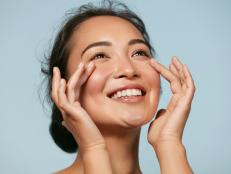1 / 12
Photo: Shutterstock / Serkey Sukhorukov
Myth #1: I'm Too Young To Worry About Skin Cancer
It seems natural to assume that skin cancer is a disease that strikes older people. But that assumption is changing. “The incidence of melanoma, the deadliest form of skin cancer, increased eightfold from 1970 to 2009 in young women and fourfold in young men,” says Dr. Alicia Zalka, citing information from the American Cancer Society. Dr. Zalka is a board-certified dermatologist and founder of Surface Deep, an online resource for skin care solutions and information. “Melanoma is the number one most diagnosed cancer among 25- to 29-year-olds in the United States.” As we head back into our summer routines, it's a good time for people of all color variations and skin types to get their skin checked, no matter what age, Dr. Zalka advises.












